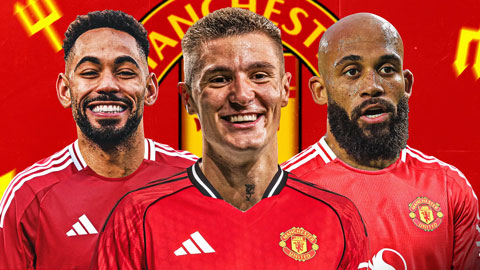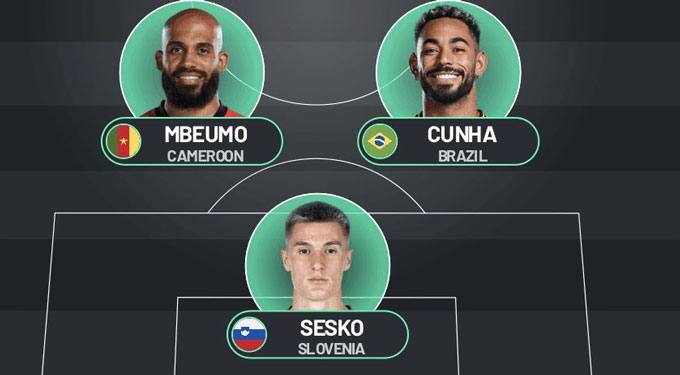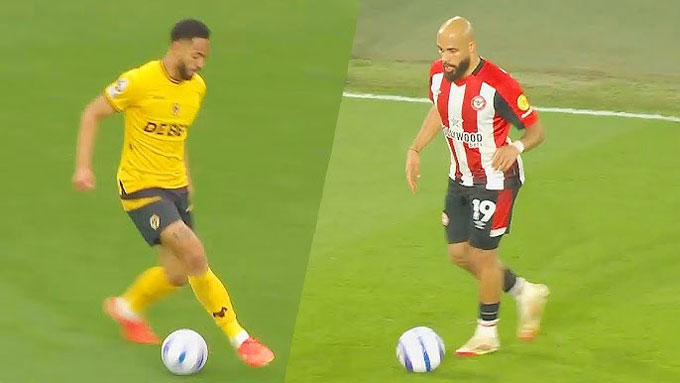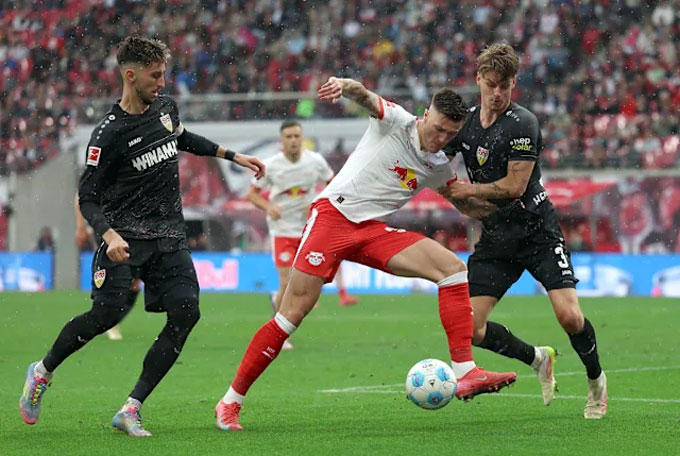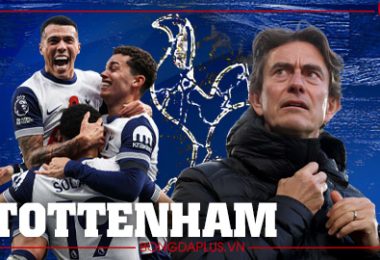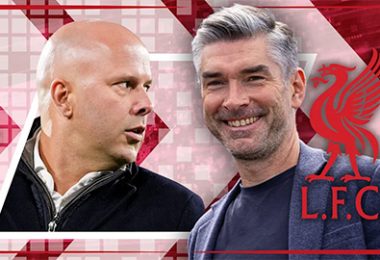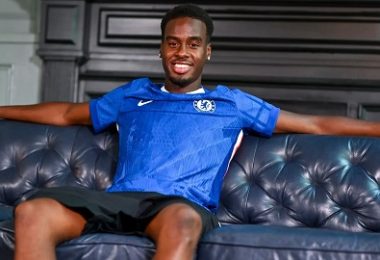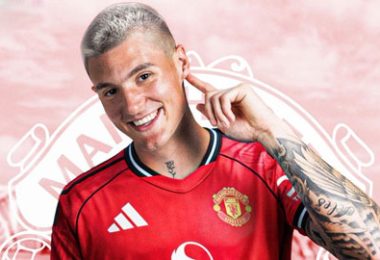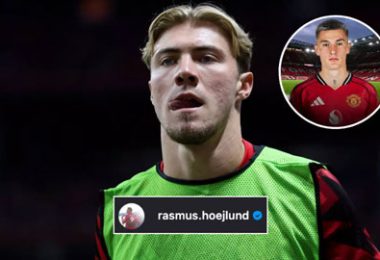With Benjamin Sesko, Bryan Mbeumo and Matheus Cunha, coach Ruben Amorim will have a completely new and extremely powerful attacking front for MU. However, to assemble them into a smooth operation machine, Amorim takes more time.
Man United's head coach is preparing to completely refresh the striker with 3 promising attack options this summer. Maheus Cunha and Bryan Mbeumo have arrived earlier, and now the club has reached an agreement with RB Leipzig to recruit Benjamin Sesko striker, bringing the total amount of money for the new attack of the 2025/26 season to more than £ 200 million.
This is an attractive prospect for the Red Devils fans. Last season, their defense showed too many problems when conceding 54 goals, but the fact that United has still ended in the 6th place in the Premier League three times in the past decade with the same number of goals. On the contrary, it is the attack that is a bigger cause that makes them decline: only scored 44 goals in the domestic league, the lowest achievement in 33 years of the Premier League era.
Obviously this is an area that needs a “reconstruction”. But can this new trio integrate and explode in Amorim's system?
There is no “leg” phenomenon
Predicting the performance of a player after changing the club was full of risk, and it was much more difficult when trying to imagine the intention of an entire attack was rebuilt from the beginning. However, the role and performance of these three rookies in recent seasons showed a positive signal that they could add and raise each other when wearing Man United.
The most basic test for this idea is the competition position: whether they have “trampled” each other? It is unknown to the exact configuration that Amorim will choose when Sesko has not officially signed a contract, and Mbeumo and Cunha have only kicked 45 minutes together in a friendly match against Everton last weekend. But in theory, they are quite balanced when ranked together.
Looking at the map touching last season: Mbeumo often appears on the right wing, Cunha tends to bundle into the middle from the left wing instead of clinging, while Sesko is mainly operating in the center. That makes the three kicks right is completely feasible.
However, simply put three good players in their favorite positions that do not guarantee the right. The important thing is how they coordinate. Does the striker perform the type of movement that the wingers want to find? Did they launch the matches with the highest kicker? And can they pressure synchronously when pressing?
CuHa and Mbeumo have competition records that are almost “reflection images” of each other, making them easy to complement and coordinate. Both are good at pulling the ball to the front with breakthrough balls and pure passes, the type of spearhead that Man United last season lacks. CuHa also has the advantage of playing at the number 10 left in the 3-4-2-1 system of Wolves, which is also the diagram that Amorim is consistently applying at Man United.
How will Mbeumo and CuHa connect to Sesko?
It is not clear how these winged attacks will connect to Sesko.
The skepticism stemming from the limited competition experience of the 22 -year -old striker Slovenia, and two contrasting seasons in Leipzig made it difficult to identify his natural play style.
When he first arrived in Leipzig in the summer of 2023, Sesko was used as a pure striker playing right above the last defender, with most of the touches that took place in the highest area. But last season, when Leipzig's performance was in decline and the problem in the attack began to look like Man United, the creative supply was blocked. Sesko often has to back up to participate in the gameplay.
To better visualize the way Sesko can be grafted into the “picture” of Man United, we can consider the strikers that Cunha and Mbeumo have played in the past, the typical requirements that Amorim set for the striker, and the level of Sesko meets that criterion.
Despite many similarities in style, Mbeumo and Cunha search for different elements in the highest kicker.
First of all, MBeumo last season cooperated more effectively with Younge Wissa in Brentford compared to CunHa in combination with Jorgen Strand Larsen in Wolves. Mbeumo passed Wissa 166 times, compared to just 80 times between Cunha and Strand Larsen, although this was only the first year of Wolves's duo, while Mbeumo and Wissa had 4 stone seasons together.
With the Cameroon player, the important factor is not only in the connection. He also exploded thanks to the ability to move without durable, intelligent ball of Wissa, constantly stretching the defense and creating space to exploit. The scene of Wissa pulled the defender with the bordering or cutting inward, opened the way for Mbeumo to turn in and cut his left leg, became a familiar image at Gtech Community Stadium last season.
On the contrary, Cunha often waited for Strand Larsen deep, taking advantage of the great body of the Norwegian striker to perform the quick “wall” phase, allowing Mr. Bang to close to the edge of the penalty area when the bundle came from the left wing. Such a situation appeared in a 3-0 victory over Leicester in April.
During both seasons at Leipzig, Sesko also showed the willingness to back to the middle line. According to Skillcorner, he always belongs to the leading European striker in the number of short moving phases to catch the ball as well as running supporting the ball in both the Bundesliga seasons. This shows that Sesko can create a platform for Cunha and Mbeumo to make short, fast and flexible combination phases.
However, what Amorim most appreciated in the center was the long -running phase, directly on the corridors, the movement of stretching the defense and opening the space for the two numbers 10 to exploit. Sesko has made many moving phases in the first season at Leipzig, but the number of times decreased when the team's performance went down. In contrast, Rasmus Hojlund is always ready to make such cross -run phases, although he often “disappears” in the ball.
The formidable guns
Under Portuguese coach, United's gameplay favored the slow and patient ball deployment. Only Man City reaches a lower speed lower than MU in the Premier League last season. But long passes into the corridor for the center are still an important tactical plan. Hojlund can move, but the problem arises when the ball is actually passed to his foot.
Despite up to 1m91 high, Hojlund was weak in the air, winning only 25% of the previous season dispute, belonging to the lowest group in the European striker. Sesko, with a height of 1m96, may not move much, but in return he is extremely good at keeping the ball during disputes. Sesko clearly surpassed Hojlund (and Joshua Zirkzee 1m91 high) in his air.
He also left the Danish striker in terms of successful balls every 90 minutes, the important factor when receiving long balls, needing to press and hold the ball waiting for his teammates to rise.
Man United currently does not have a strong rear frame to support an Erling Haaland striker model, who lurks in the penalty area and waited for the opportunity to finish. Their number 9 will have to “roll up sleeves”, ready to roll, participate in the game. And there is a lot of evidence that Sesko is willing to do it.
The most encouraging thing is Sesko's “Haaland style” instinct to find and finish the opportunity, no matter how behind. Although Leipzig experienced two fluctuations, he still scored two numbers in both seasons.
In fact, all three attacks of Man United scored more than 10 goals last season. The fastest and simplest way for them to build their intentions and confidence is to continue that goalscoring ability to Old Trafford.

